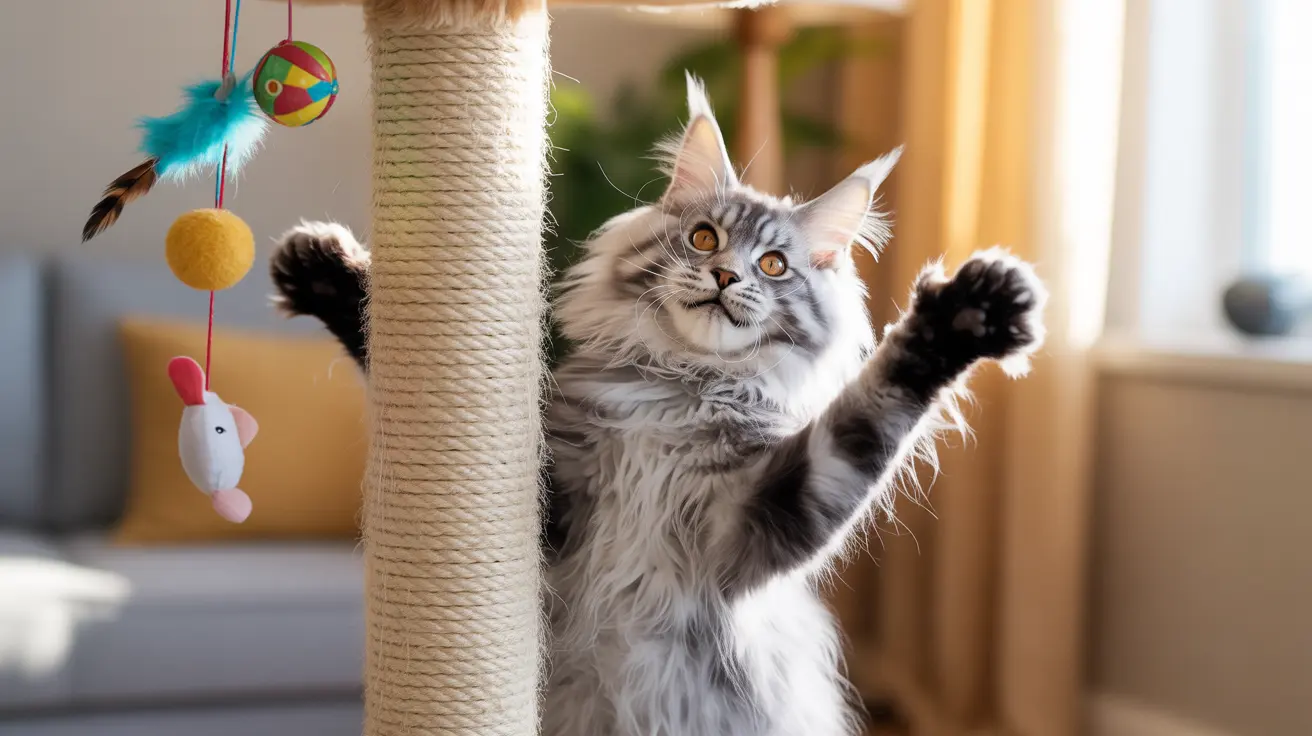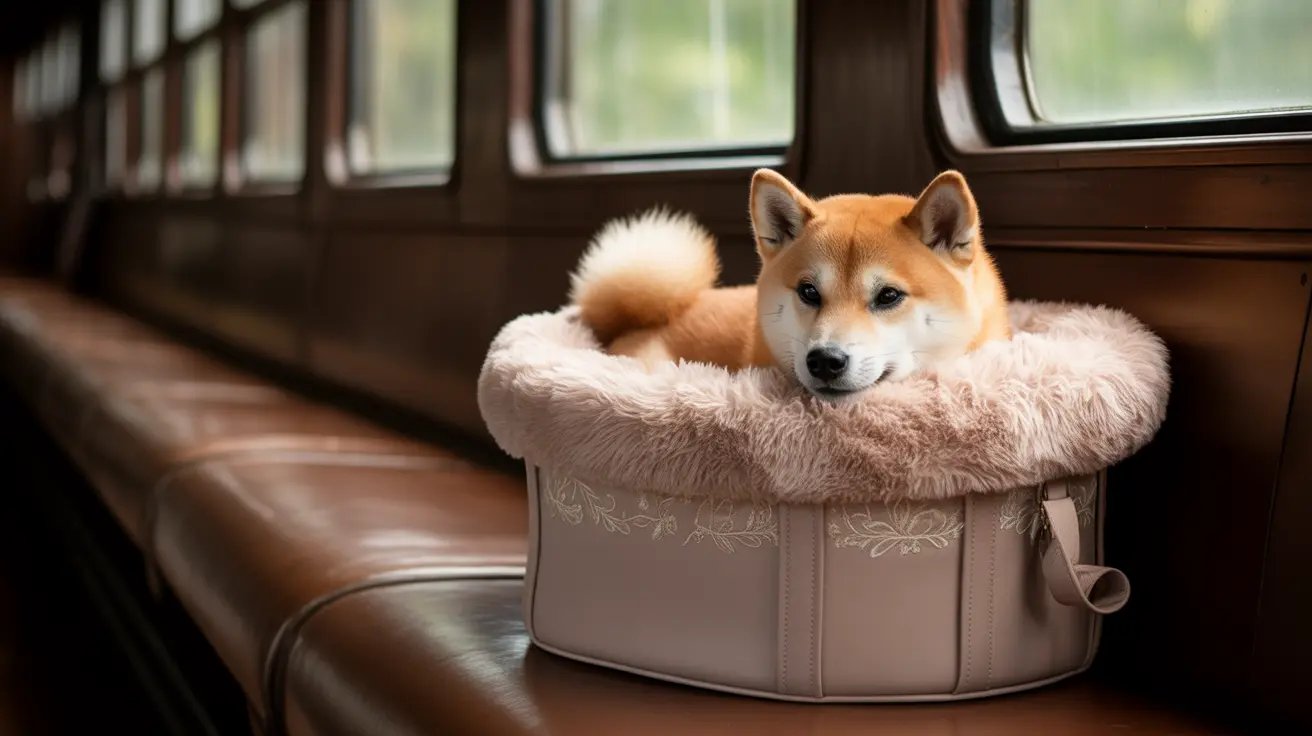Creative Cat Scratching Furniture Ideas: Solutions That Protect Your Home and Please Your Feline
If you're tired of watching your beloved cat turn your expensive sofa into their personal scratching paradise, you're not alone. Cat scratching furniture damage is one of the most common frustrations pet owners face, but the solution isn't to stop your cat from scratching altogether – it's about providing them with irresistible alternatives. Understanding that scratching is a normal, instinctive behavior essential for your cat's wellbeing is the first step toward finding creative cat scratching furniture ideas that work for both you and your feline companion.
Cats begin scratching as early as 8 weeks old, and this behavior serves multiple vital purposes: marking territory through visual cues and pheromones from scent glands in their feet, sharpening their nails by removing the outer nail sheath, stretching muscles, and relieving anxiety or overexcitement. Rather than fighting against this natural instinct, smart cat owners are discovering innovative scratching furniture solutions that redirect this behavior while enhancing their home's aesthetic appeal.
In this comprehensive guide, we'll explore diverse cat scratching furniture ideas that go far beyond basic scratching posts, helping you create an environment where your cat can express their natural behaviors while keeping your household furniture intact.
Understanding Why Your Cat Scratches Furniture
Before diving into creative solutions, it's crucial to understand the science behind your cat's scratching behavior. In the wild, cats typically scratch vertical surfaces like tree trunks to leave visual and scent marks at eye and nose level, which explains why indoor cats often target the arms of couches or wooden furniture legs. This instinctual behavior is deeply rooted in their DNA and serves as both a physical and emotional necessity.
Cats may also scratch horizontal surfaces like carpets, which allow them to stretch, sharpen nails, and relieve stress. Individual preferences between vertical and horizontal scratching surfaces vary among cats, and they consistently prefer stable, immobile surfaces that won't tip or move during use. Carpets often fulfill this stability need, making them attractive targets for scratching behavior.
Essential Features of Effective Cat Scratching Furniture
When selecting or creating cat scratching furniture ideas, certain characteristics make alternatives more appealing to cats and more effective at protecting your belongings. Successful scratching furniture should be tall enough to allow full stretching when cats reach up to scratch, and must be completely stable to prevent tipping during vigorous scratching sessions.
The material selection plays a crucial role in attracting cats to use designated scratching areas. Popular and effective materials include sisal rope, carpet, cardboard, wood, and upholstery fabric. Each material offers different textures and resistance levels, so experimenting with various options helps identify your cat's preferences. Well-padded materials and well-constructed durable components enhance both longevity and appeal to cats, making your investment more worthwhile over time.
Creative Vertical Scratching Solutions
Moving beyond traditional scratching posts, today's market offers numerous innovative vertical scratching furniture designs that blend functionality with home decor. XXL scratching barrels provide expansive vertical surfaces while creating dramatic focal points in rooms. These larger pieces often incorporate multiple scratching areas and can accommodate cats of all sizes comfortably.
Novelty-shaped scratchers have gained popularity for their unique aesthetic appeal and functionality. Cactus-shaped scratchers, mushroom designs, and sunflower-inspired pieces add whimsical touches to home decor while providing essential scratching surfaces. These creative designs often feature sisal rope wrapping and may include integrated features like bells or toys to enhance engagement.
Many modern vertical scratching furniture pieces double as lounging or hiding spots for cats, offering comfort as well as functionality. Multi-level designs with integrated resting platforms, cushioned perches, and enclosed hideaways maximize space efficiency while meeting multiple feline needs simultaneously.
Horizontal Scratching Alternatives
For cats who prefer horizontal scratching surfaces, protective scratching mats offer excellent solutions for furniture protection. These mats can be placed strategically in front of sofas, chairs, or other targeted furniture pieces, providing acceptable scratching surfaces while preserving your upholstery.
Cardboard scratchers remain popular horizontal options due to their affordability and cat appeal. Many feature corrugated surfaces that cats find irresistible, and some include catnip infusions to increase attractiveness. These disposable options allow for easy replacement when worn and can be positioned wherever scratching problems occur.
Scratching boards and mats designed specifically for carpet protection can be placed over high-traffic scratching areas. Some feature adhesive backing for secure placement, while others rely on weight and friction to stay in position during use.
Multi-Functional Scratching Furniture Ideas
The most successful cat scratching furniture ideas often combine scratching surfaces with other feline amenities. Scratching furniture that incorporates lounging areas appeals to cats' desire for elevated resting spots while providing convenient scratching access. Washable cushions and removable padding make maintenance easier and extend furniture lifespan.
Some innovative designs feature scratching surfaces integrated into functional human furniture pieces. Coffee tables with sisal-wrapped legs, side tables with scratching panel inserts, and bookshelf designs incorporating scratching posts demonstrate how cat furniture can enhance rather than detract from home aesthetics.
Interactive scratching furniture with hanging toys, feathers, or balls encourages play while promoting scratching behavior. These multi-functional pieces address multiple behavioral needs simultaneously, making them excellent investments for active cats.
Strategic Placement and Training Tips
Even the most attractive scratching furniture won't succeed without proper placement and introduction techniques. Position scratching alternatives near furniture cats currently target and in areas where family members spend time, as cats often scratch to mark territory in socially significant locations.
Encourage use of new scratching posts by modeling the behavior through fingernail raking on the surface, sprinkling catnip on posts, or rewarding cats with high-value treats and praise when they investigate or use the new furniture. Patience and positive reinforcement prove more effective than forced introduction or punishment.
For multi-cat households, provide multiple scratching options to avoid conflicts and ensure each cat has access to preferred scratching surfaces. Different cats may prefer different materials, angles, or locations, so variety becomes essential for success.
Material Comparison and Benefits
Understanding the advantages of different scratching furniture materials helps in selecting options that match both cat preferences and household needs. Sisal rope provides excellent durability and texture that most cats find appealing, while cardboard offers affordability and easy replacement when worn. Carpet-covered surfaces may appeal to cats already scratching household carpets, helping redirect the behavior to appropriate locations.
Wood scratching surfaces provide natural textures and durability, though they may require more maintenance than synthetic alternatives. Upholstery fabrics can match home decor but may wear more quickly under heavy use. Combining multiple materials in single pieces or throughout your home provides variety that appeals to different preferences.
DIY Cat Scratching Furniture Projects
Budget-conscious cat owners can create effective scratching furniture using simple materials and basic construction skills. Wrapping sisal rope around wooden posts, covering boards with carpet remnants, or creating cardboard scratching pads offers affordable alternatives to commercial products.
DIY projects allow customization for specific spaces and cat preferences while providing satisfaction from creating functional pet furniture. Simple designs like rope-wrapped table legs, cardboard scratching ramps, or fabric-covered scratching boards can be completed with minimal tools and investment.
Maintenance and Longevity Tips
Proper maintenance extends the life of cat scratching furniture and maintains its appeal to cats. Regular cleaning removes accumulated debris and odors, while periodic catnip refreshing can renew interest in older pieces. Inspect scratching furniture regularly for wear patterns and replace components before they become unsafe or ineffective.
For pieces with washable cushions or removable components, regular cleaning prevents odor buildup and maintains hygiene. Some scratching surfaces can be rewrapped or recovered when worn, extending their useful life significantly.
Addressing Persistent Scratching Problems
When cats continue scratching inappropriate surfaces despite available alternatives, additional strategies may be necessary. Gentle deterrents such as motion-activated air spray cans that emit hiss noises, citrus-based sprays, double-sided sticky tape, or plastic covers can make furniture less attractive for scratching.
Enzymatic cleaners effectively remove cat pheromone scents from previously scratched areas, reducing repeat marking behavior. Pheromone sprays like Feliway Classic can help by mimicking feline facial pheromones, naturally deterring unwanted scratching while promoting calm behavior.
If scratching appears related to anxiety or stress, environmental enrichment with interactive toys, climbing structures, window perches, or consultation with veterinary behaviorists may address underlying causes more effectively than furniture-focused solutions alone.
Frequently Asked Questions
How many scratching furniture pieces should I provide for one cat?
A single scratching post or tree is usually insufficient for most cats. Providing multiple scratching options in different locations, with various materials and orientations, encourages appropriate scratching behavior and reduces furniture damage. Most experts recommend at least 2-3 scratching options for single cats, with additional pieces for multi-cat households.
What materials are most effective for cat scratching furniture?
Sisal rope, cardboard, carpet, wood, and upholstery fabric each offer different benefits. Sisal provides durability and appealing texture, cardboard offers affordability and easy replacement, while carpet may appeal to cats already scratching household carpets. Experimenting with different materials helps identify your cat's preferences for maximum effectiveness.
Where should I place scratching furniture in my home?
Position scratching alternatives near furniture cats currently target and in areas where family members spend time. Cats often scratch to mark territory in socially significant locations, so placement near family gathering areas increases usage. For multi-cat households, distribute multiple pieces throughout the home to prevent conflicts.
How can I encourage my cat to use new scratching furniture?
Model the scratching behavior by raking your fingernails on the surface, sprinkle catnip on new pieces, and reward cats with treats and praise when they investigate or use the furniture. Avoid forcing cats to use scratchers, as this can create negative associations. Patience and positive reinforcement prove most effective.
What should I do if my cat ignores scratching alternatives?
Try different materials, locations, or orientations for scratching furniture. Some cats prefer horizontal surfaces while others prefer vertical, and individual material preferences vary significantly. Ensure scratching furniture is stable and appropriately sized, and consider consulting with veterinary behaviorists if problems persist.
Can scratching furniture help with anxiety-related scratching?
Yes, providing appropriate scratching outlets can help reduce stress-related scratching behavior. Environmental enrichment through varied scratching options, combined with other stress-reduction strategies like pheromone diffusers or calming supplements, often improves anxiety-related scratching issues.
How often should I replace or maintain scratching furniture?
Inspect scratching furniture regularly for wear and safety. Replace pieces when they become unstable or heavily worn, and refresh cardboard scratchers when they lose effectiveness. Clean washable components regularly and consider rewrapping sisal or recovering surfaces to extend furniture life.
By implementing these creative cat scratching furniture ideas and understanding your cat's natural needs, you can successfully protect your household furniture while providing essential outlets for healthy scratching behavior. Remember that patience, positive reinforcement, and variety are key to finding solutions that work for both you and your feline companion. The investment in appropriate scratching furniture pays dividends in preserved household items and happier, healthier cats.






